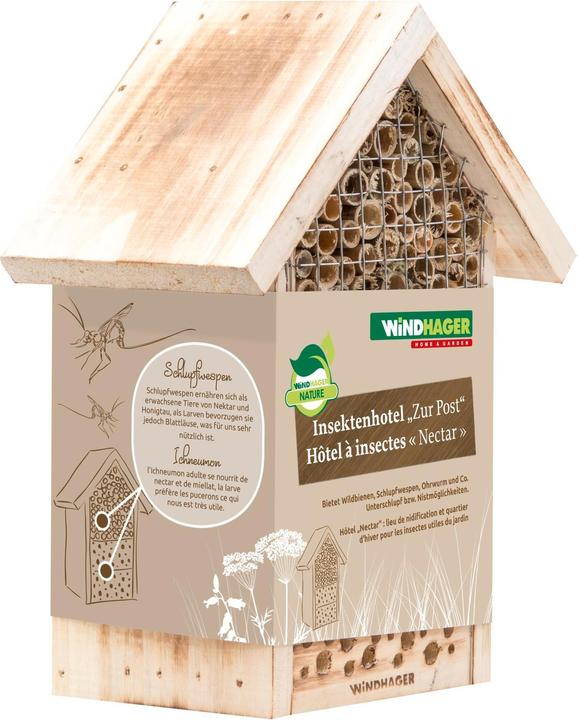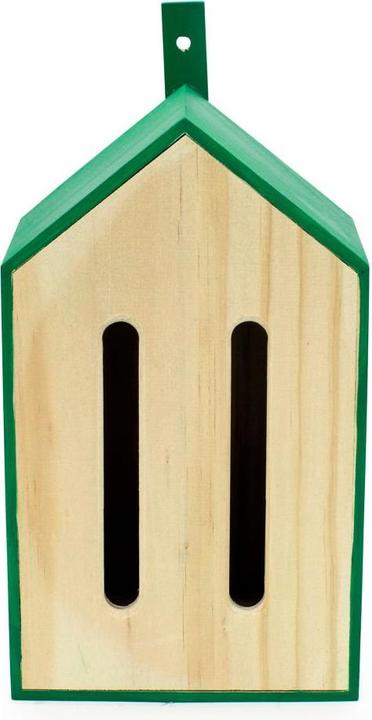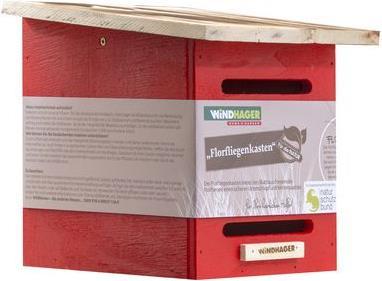

Insect hotels are great – but only if they’re done right
March is the perfect time of year to install an insect hotel in your garden or on the balcony. But only if the rooms are designed in such a way that they can be occupied.
We need to have a few words with our online shop first. There’s around 200 different insect hotels in our range, but experts would certainly shake their heads in disbelief at several of them. They’ve got good intentions at best, but they’re not well made. What does it come down to when choosing an insect hotel? What’s important to consider?
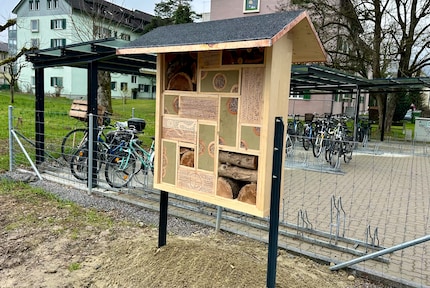
Source: Martin Jungfer
Choose the right material
Hollow plant stems are particularly popular with bees and wasps. They use them as nesting holes for their offspring. Reeds and bamboo canes are often used too. Tip: a good hotel will have straight cut edges and be sanded. Otherwise, splinters could injure the bees and wasps.
Another material suitable for bees and wasps is hardwood. The wood of deciduous trees such as beech, ash and oak, as well as apple trees, has an advantage over softwood from fir, spruce and the like because it warps less in damp conditions. Holes are drilled into the hardwood, which in turn serve as nesting areas. Make sure that the holes aren’t at the front, i.e. where you can see the annual rings. If holes are drilled parallel to the bark instead, the tunnel walls are smooth for the insects. As with plant stalks, drill holes in the wood should also be free of splinters and sanded down. The holes, ideally ten to twelve centimetres deep, preferably even deeper, shouldn’t go all the way through the wood because insects will retreat in there.
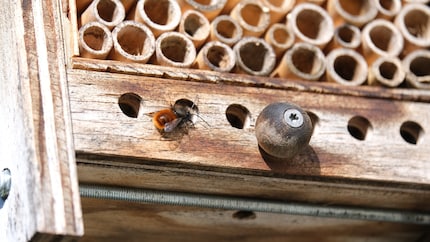
Source: Martin Jungfer
The nesting holes, whether bamboo tubes or drilled wood, mainly attract bees and wasps to your hotel. If you want to attract ladybirds, lacewings or earwigs, you’ll need different material. All three insects like wood wool and cones. Lacewings and earwigs are attracted to straw. The disadvantage with having these materials in your insect hotel, however, is that it gets damp easily and can quickly become mouldy. So check it regularly and if necessary, simply replace it.
Now and again you’ll see insect hotels with hollow bricks in them. Most experts advise against this. Bricks can store heat well and are visually attractive – at least for us humans. And they may be a very inexpensive raw material for insect hotel manufacturers. For most insects, however, the hollow chambers are too large, the edges on the entrances too sharp and it’s draughty. At best, you could use up plant stems by sticking them into the perforated bricks. Or why not just use plant stems after all?
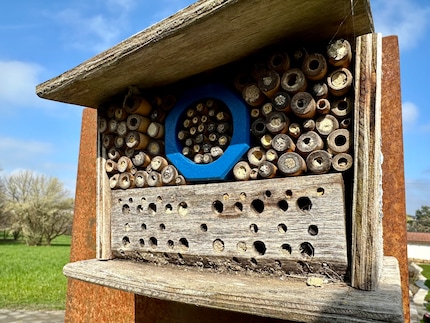
Source: Martin Jungfer
Be a specialist
There are lots of insects out there and all of them would certainly be happy to have a home. Nevertheless, decide who the guests in your insect hotel should be and make it as pleasant as possible for them.
Wild bees
As described above, wild bees like tubes and tunnels to raise their offspring in. That’s why in the wild, bees and wasps often inhabit the tunnels in dead wood which beetles have munched on. In an insect hotel, the diameter of the holes in the logs should be in the range of two to nine millimetres. If the holes are different, there should be more of those measuring three to six millimetres. This will allow masked bees, holed bees, scissor bees, the red mason bee, leafcutter bees and the horned mason bee to find shelter here.
Butterflies
If you want to see colourful butterflies fluttering in your garden in the spring and summer, you can attract them with special houses. These are constructed in a similar way to a birdhouse, but have vertical slits as entrances. With a bit of luck, you’ll get to enjoy small tortoiseshells, red admirals and more.
Ladybirds and lacewings
Ladybirds, but especially lacewings, help you keep the pests in your garden under control. The larva of the lacewing is an all-rounder among the beneficial insects because it kills everything from spider mites to mealybugs, cicadas and thrips. Adult lacewings are handy too. They feed on pollen and nectar and help pollinate the garden.
Houses with horizontal slits as entrances are a good home for lacewings, but also for ladybirds.
Choose the right location
You’ve chosen the insect hotel to get the inhabitants you want in your garden – good. Once the parcel has arrived, you’ve got the next task on your hands. That is, finding the right spot. Set it up facing south. Insects need warmth to breed, so there should be direct sunlight on the insect hotel. Sun and warmth also help prevent mould and fungi.
Be sure to avoid the following places:
- Hanging in a tree, especially a younger one that sways strongly in the wind. Insects don’t appreciate this any more than humans do.
- Near an anthill. In no time at all, this would turn the larvae of insects you’re housing into a running buffet for the ants.
- Birds are also interested in larvae. If you don’t want the insect offspring turning into food for others, the insect hotel shouldn’t be too far away from your house. Birds are less likely to venture there, so the insects are better protected from feathered predators.
- A position where the entrances point towards the weather front, i.e. north-west. It’s better to have the openings to breeding cavities facing east.
Give nature as much space as possible
Finally, the most important tip if you want to do something good for insects and nature is to design your garden as close to nature as possible! An insect hotel is of little use in a garden dominated by gravel areas and short-cropped lawns «maintained» with toxins. Butterflies, bees, ladybirds – they all need nectar as food to survive. Monocultures in fields and sealed surfaces in cities are increasingly reducing insect habitats.
Every bloom matters! How about at least a small area in your garden with a flowerbed? (You can find suitable seed mixtures here.) A planter on the balcony also offers space for this and the inhabitants of the insect hotel can take a trip there too.
During my research, I found a lot more information about nesting aids for insects on naturgartenfreunde.de (page in German). If you always want to have fully booked rooms in your insect hotel, you’re guaranteed to find what you need here.
Journalist since 1997. Stopovers in Franconia (or the Franken region), Lake Constance, Obwalden, Nidwalden and Zurich. Father since 2014. Expert in editorial organisation and motivation. Focus on sustainability, home office tools, beautiful things for the home, creative toys and sports equipment.
Practical solutions for everyday problems with technology, household hacks and much more.
Show all
